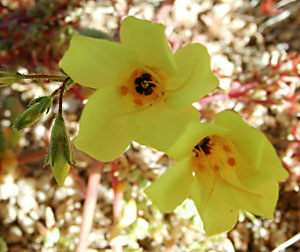This page is based on this
Wikipedia article Text is available under the
CC BY-SA 4.0 license; additional terms may apply.
Images, videos and audio are available under their respective licenses.

Staphylococcus aureus is a Gram-positive, round-shaped bacterium that is a member of the Firmicutes, and it is a usual member of the microbiota of the body, frequently found in the upper respiratory tract and on the skin. It is often positive for catalase and nitrate reduction and is a facultative anaerobe that can grow without the need for oxygen. Although S. aureus usually acts as a commensal of the human microbiota it can also become an opportunistic pathogen, being a common cause of skin infections including abscesses, respiratory infections such as sinusitis, and food poisoning. Pathogenic strains often promote infections by producing virulence factors such as potent protein toxins, and the expression of a cell-surface protein that binds and inactivates antibodies. The emergence of antibiotic-resistant strains of S. aureus such as methicillin-resistant S. aureus (MRSA) is a worldwide problem in clinical medicine. Despite much research and development, no vaccine for S. aureus has been approved.

Methicillin-resistant Staphylococcus aureus (MRSA) refers to a group of gram-positive bacteria that are genetically distinct from other strains of Staphylococcus aureus. MRSA is responsible for several difficult-to-treat infections in humans. MRSA is any strain of S. aureus that has developed, through horizontal gene transfer and natural selection, multiple drug resistance to beta-lactam antibiotics. β-lactam antibiotics are a broad spectrum group which includes some penams – penicillin derivatives such as methicillin and oxacillin, and cephems such as the cephalosporins. Strains unable to resist these antibiotics are classified as methicillin-susceptible S. aureus, or MSSA.

The golden jackal is a wolf-like canid that is native to Southeast Europe, Southwest Asia, South Asia, and regions of Southeast Asia. Compared with the Arabian wolf, which is the smallest of the gray wolves, the jackal is smaller and possesses shorter legs, a shorter tail, a more elongated torso, a less-prominent forehead, and a narrower and more pointed muzzle. The golden jackal's coat can vary in color from a pale creamy yellow in summer to a dark tawny beige in winter. It is listed as Least Concern on the IUCN Red List due to its widespread distribution and high density in areas with plenty of available food and optimum shelter.
Codex Aureus is Latin for Golden Book. Several Gospel Books from the 9th through 11th centuries were so heavily illuminated with gold leaf that they were referred to as the Codex Aureus. These manuscripts include:

The golden bamboo lemur, bokombolomena in Malagasy, is a medium-sized bamboo lemur endemic to south-eastern Madagascar.

The golden angwantibo is a strepsirrhine primate of the family Lorisidae. It shares the genus Arctocebus with the Calabar angwantibo and together they are commonly called the golden pottos. The golden
angwantibo is found in Cameroon, the Republic of Congo, Equatorial Guinea and Gabon. Its usual habitat is rain forest, but it has also been known to live on farmland.

The flame bowerbird is one of the most brilliantly coloured bowerbirds. The male is a medium-sized bird, up to 25 cm long, with flame orange and golden yellow plumage, elongated neck plumes and yellow-tipped black tail. It builds an "avenue-type" bower with two side walls of sticks. The female is an olive brown bird with yellow or golden below.
Thorius aureus, the golden thorius, is a species of salamander in the genus Thorius, the Mexican pigmy salamanders, part of the lungless salamander family. It is endemic to mountainous areas of north central Oaxaca State in Mexico. It is one of the largest Thorius species.
The golden-backed bishop is a species of bird in the family Ploceidae.
It is found in western Angola and São Tomé Island.
Oriol is a Catalan name, which can be found as a given name or a surname. It derives from the Latin word aureus (golden). It was originally just a surname, but started to be used as a given name in honour of Saint Joseph Oriol. It may refer to:

Leptosiphon aureus is a species of flowering plant in the phlox family known by the common name golden linanthus.
Aurelia is a feminine given name from the Latin family name Aurelius, which was derived from aureus meaning "golden". The name began from minor early saints but was given as a name due to its meaning, and not from where it originated. Aurelia may refer to:

The European jackal, also known as the Caucasian jackal or reed wolf is a subspecies of golden jackal native to Southeast Europe, Asia Minor and the Caucasus. It was first described in 1833 by French naturalist Isidore Geoffroy Saint-Hilaire during the Morea expedition. In Europe, there are an estimated 70,000 jackals. Though mostly found in scattered populations within Eastern Europe, its range has grown to encompass parts of its former Eastern European range, as well as in Western Europe, which is thought to be attributable to a decline in grey wolf populations.
Aurea, Golden in Latin, may refer to:

Paradoxurus aureus, the golden palm civet, also called golden paradoxurus and golden wet-zone palm civet is a viverrid species native to Sri Lanka. It was first described by Frédéric Cuvier in 1822.

Conothamnus aureus is a member of the family Myrtaceae and is endemic to Western Australia. It is a spindly, straggly shrub with rigid, blunt leaves and spherical heads of golden yellow flowers resembling those of wattles.










